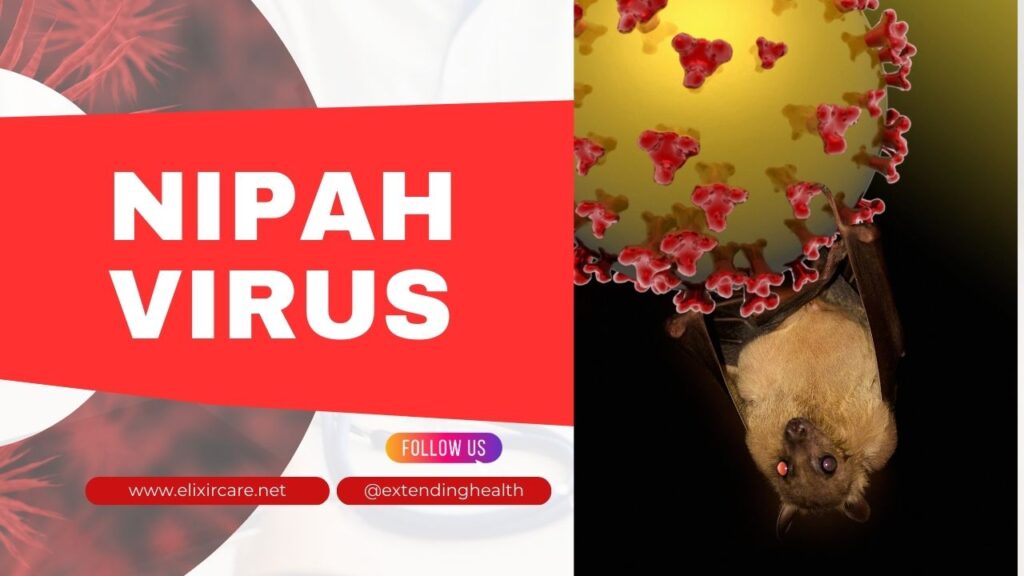Introduction
As we navigate through 2024, a new health concern has emerged on the global stage and our very own country India: the Nipah virus(NiV) outbreak. This rare but potentially deadly disease has caught the attention of health professionals and the public alike. In this article, we’ll explore the history of Nipah virus, its causes, symptoms, and most importantly, how we can protect ourselves and our communities.
The 2024 Nipah Virus(NiV) Outbreak
Current Situation
The 2024 Nipah virus outbreak began in early March, with initial cases reported in rural areas of Bangladesh. Within weeks, cases were being identified in neighboring India, particularly in the states of Maharashtra and Kerala.
The World Health Organization (WHO) has declared the outbreak a Public Health Emergency of International Concern (PHEIC). Countries worldwide have heightened their surveillance efforts, and research institutions are racing to develop targeted treatments and vaccines.
A Brief History of Nipah Virus(NiV)
Nipah virus isn’t new to the medical world. Here’s a timeline of significant events:
- 1998: First identified during an outbreak in Malaysia and Singapore
- 1999: Outbreak contained in Malaysia through culling of over one million pigs
- 2001: First recorded outbreak in India (West Bengal)
- 2004: Bangladesh experiences its first outbreak
- 2018: Major outbreak in Kerala, India, with 17 deaths
- 2024: Current ongoing outbreak
Causes and Transmission
The Natural Reservoir
Nipah virus primarily resides in fruit bats, specifically the Pteropus genus, also known as flying foxes. These bats can carry the virus without showing symptoms, making them perfect natural reservoirs.
Transmission to Humans
The virus can spread to humans through:
- Direct contact with infected bats
- Consuming fruits or palm sap contaminated by infected bats
- Close contact with infected pigs or other animals
- Human-to-human transmission through bodily fluids
Recognizing the Symptoms of Nipah Virus(NiV)
Nipah virus infection can manifest in various ways, ranging from asymptomatic cases to severe illness. Common symptoms include:
Initial Symptoms (3-14 days after exposure)
- Fever
- Headache
- Muscle pain
- Vomiting
- Sore throat
Severe Symptoms
- Confusion and disorientation
- Drowsiness
- Seizures
- Coma
- Brain swelling (encephalitis)
“Early recognition of symptoms is crucial. If you’ve been in an affected area and experience flu-like symptoms, seek medical attention immediately.”
Government Response
The Indian government has implemented several measures to address the Nipah virus threat:
- Surveillance and Monitoring: Enhanced surveillance systems have been put in place to detect and report cases promptly. This includes monitoring fruit bat populations and other potential animal hosts.
- Public Awareness Campaigns: Efforts to educate the public about the virus, its transmission, and preventive measures have been intensified. This includes distributing informational materials and conducting community outreach programs.
- Healthcare Infrastructure: Strengthening healthcare facilities to manage and treat Nipah virus cases is a priority. This includes training healthcare workers, ensuring the availability of necessary medical supplies, and establishing isolation wards.
Preventive Measures
Preventing Nipah virus infection involves a combination of personal hygiene, food safety, and community-level interventions.
Personal Protection
- Wash hands frequently with soap and water
- Avoid contact with sick animals, particularly pigs and bats
- Don’t consume raw date palm sap or fruits that may have been contaminated by bats
- Use personal protective equipment (PPE) if you’re a healthcare worker or caregiver
Community-Level Prevention
- Improve fruit bat management in affected areas
- Enhance surveillance and early warning systems
- Educate communities about safe practices and symptoms
- Implement proper infection control in healthcare settings
Ongoing Research
Scientists are working on developing a Nipah virus vaccine. While not yet available, clinical trials are underway, offering hope for future prevention strategies.
Conclusion
The 2024 Nipah virus outbreak serves as a stark reminder of the ongoing challenges we face in public health. By understanding the virus, recognizing its symptoms, and implementing preventive measures, we can work together to mitigate its impact. Stay informed, follow guidelines from health authorities, and prioritize your health and the health of your community.
Remember, in the face of any health crisis, knowledge and preparedness are our best defenses. Stay vigilant, stay safe.
Follow Elixir Care @extendinghealth. Click here to know latest updates on health news https://x.com/extendinghealth



